Eco-Friendly Roofing: The Smart, Sustainable Way to Top Your Home
Choosing a roof isn’t just about looks or lifespan anymore—homeowners today are also considering their environmental footprint. Whether you’re building new or replacing an old roof, eco-friendly roofing offers long-term savings, reduced waste, and better energy performance.
In this guide, we’ll explore the most sustainable roofing options on the market, from solar shingles to recycled tiles. You’ll learn how each material affects energy efficiency, durability, and your home’s long-term environmental impact—plus how to choose the right solution for your climate and budget.
Looking for a side-by-side comparison of all major roofing types? Check out our full guide here
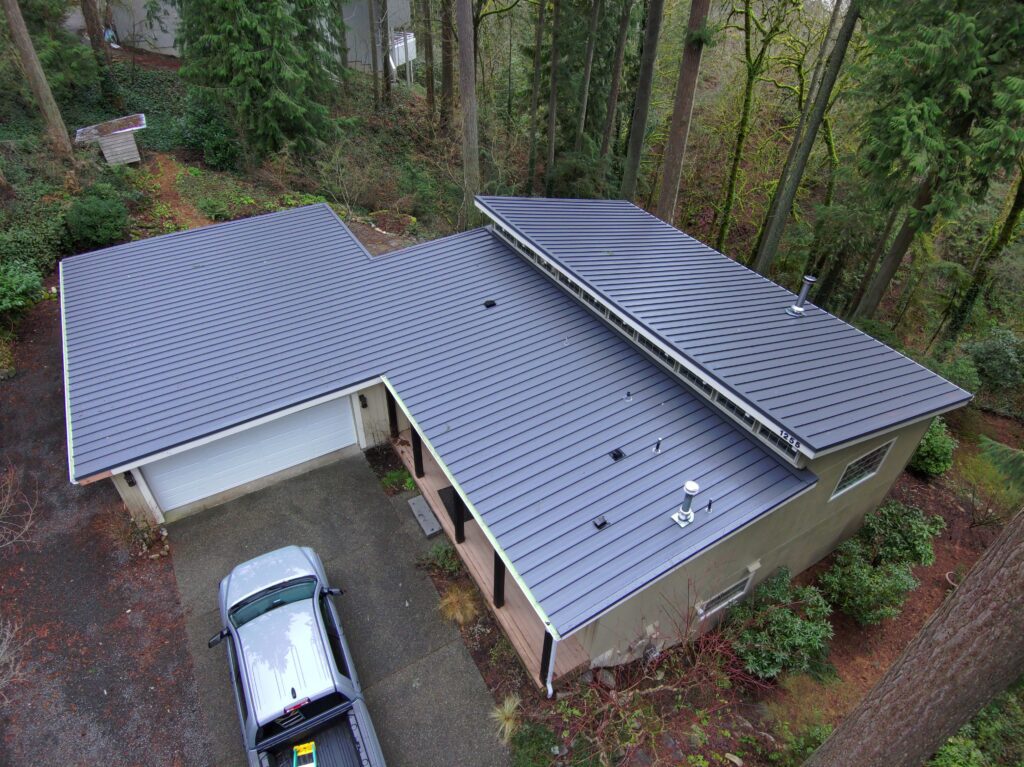
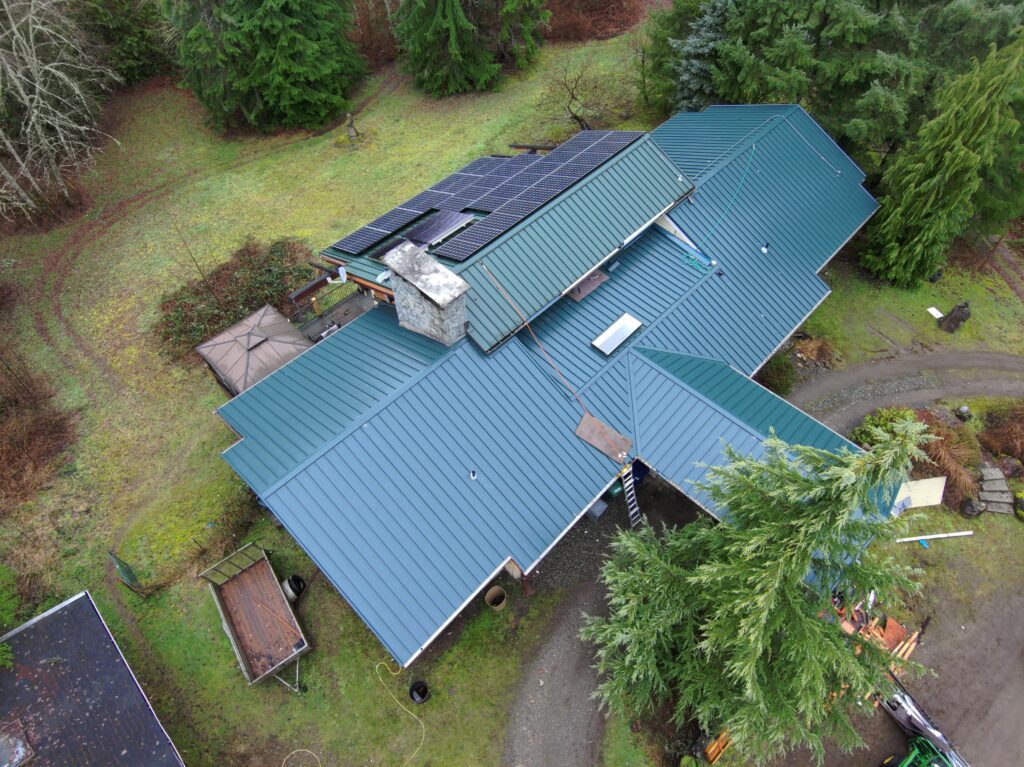
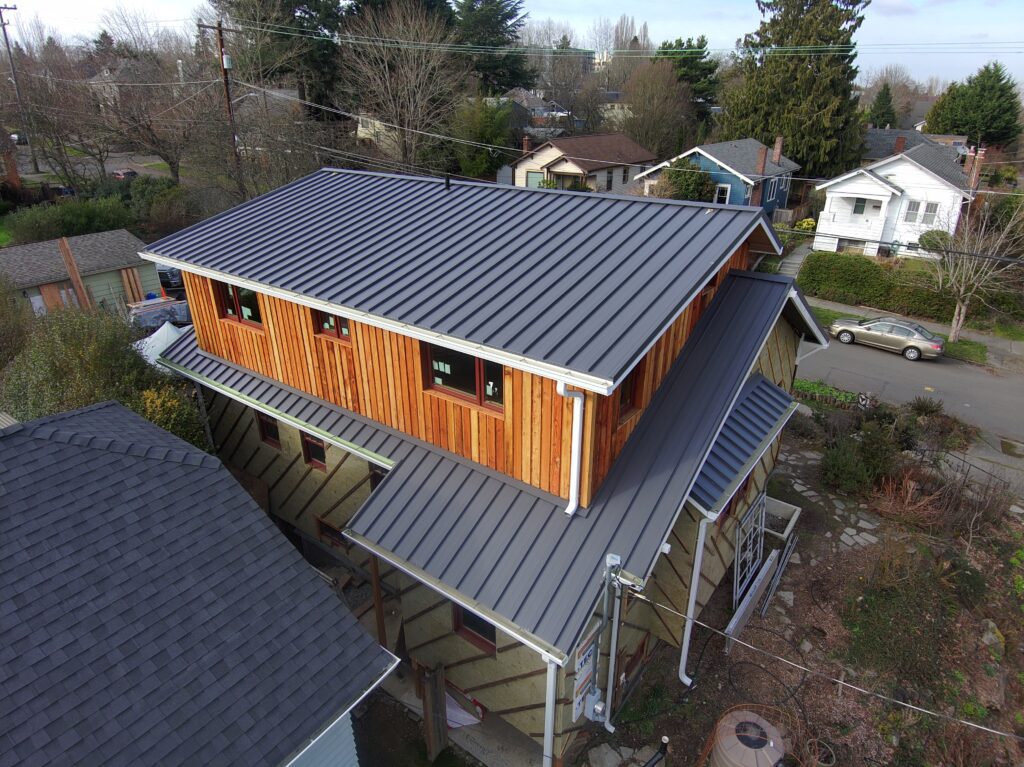
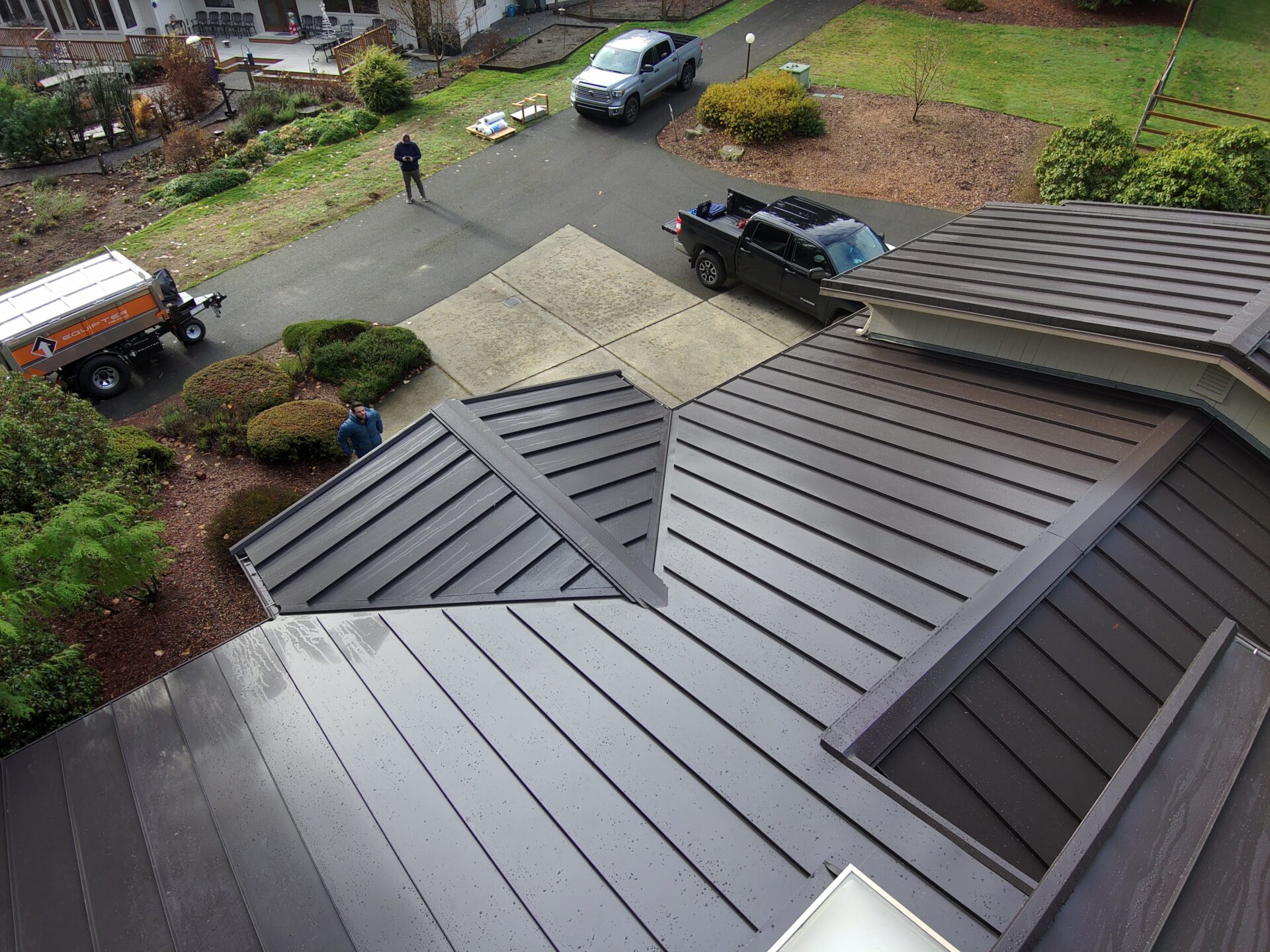
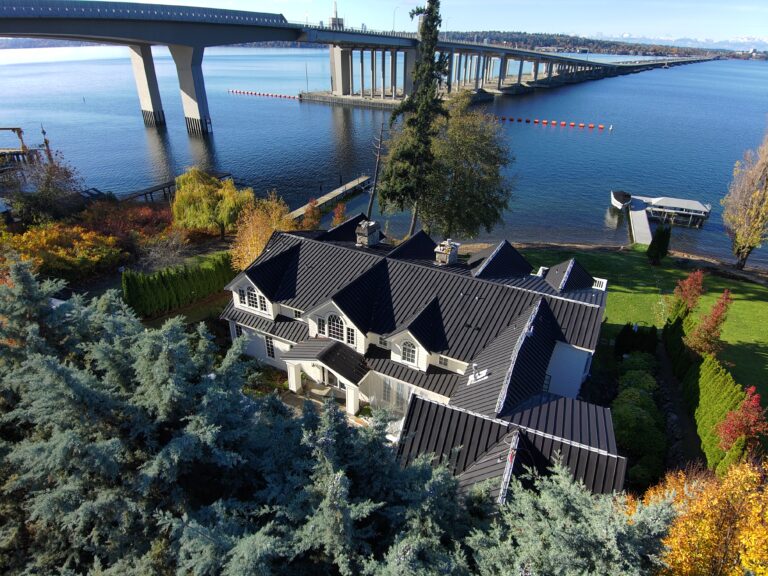
What Makes a Roof Eco-Friendly?
An eco-friendly roof is one that:
- H3: Reduces environmental impact during manufacturing
- H3: Improves energy efficiency during its lifespan
- H3: Is recyclable or sustainably sourced
- H3:Requires fewer replacements over time
Not all “green” roofs look the same—some are high-tech, like solar shingles; others rely on natural or recycled materials. Let’s look at the top options.
Solar Shingles: Power + Protection in One Roof
Solar shingles are a cutting-edge option in eco-friendly roofing. These systems generate renewable energy while acting as your roof’s outer layer—offering protection, performance, and a sleek look all in one.
Perfect for sun-facing homes, they reduce utility bills and qualify for green energy incentives. While the upfront cost is higher, solar shingles are a long-term investment in both sustainability and home efficiency.
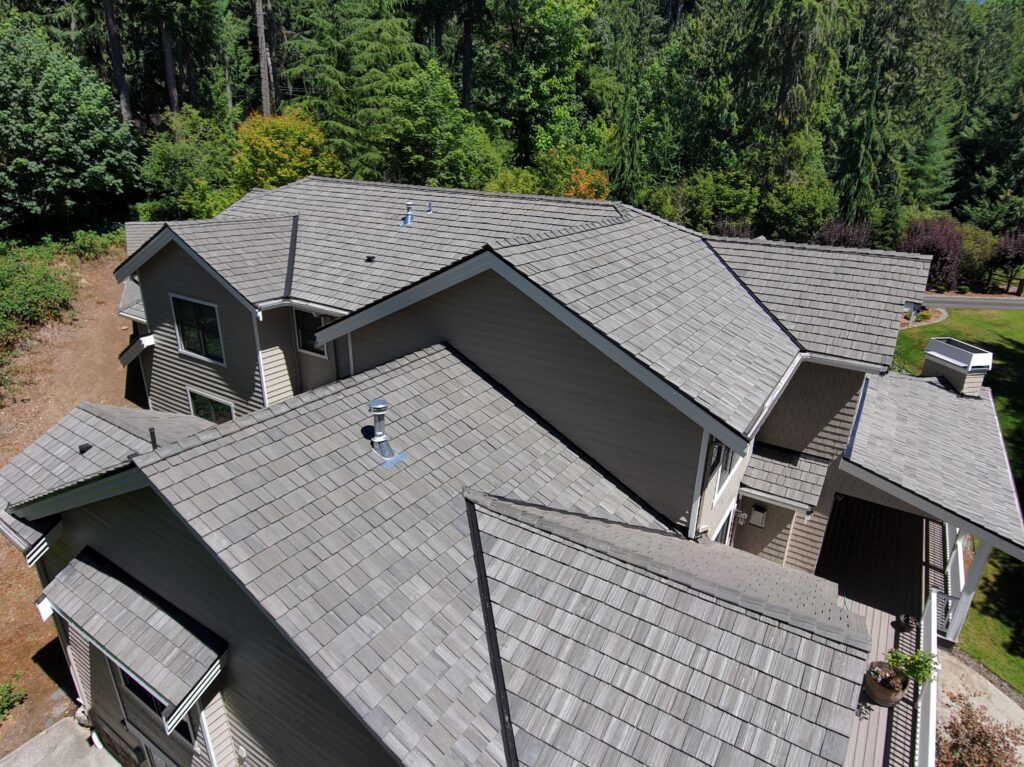
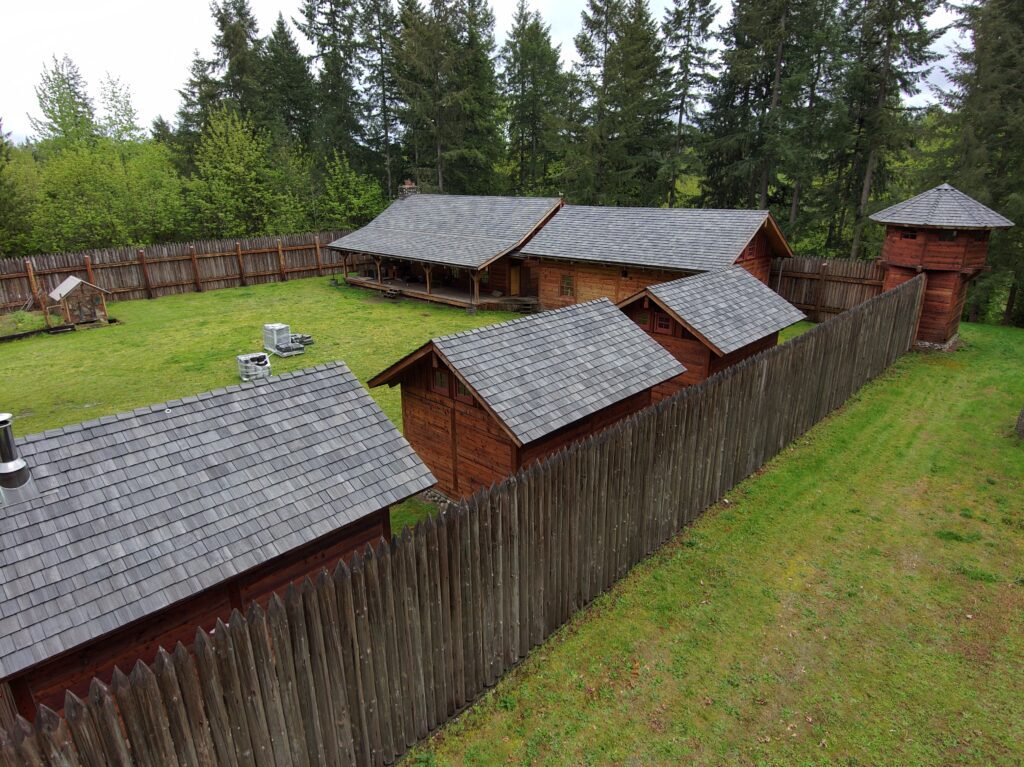
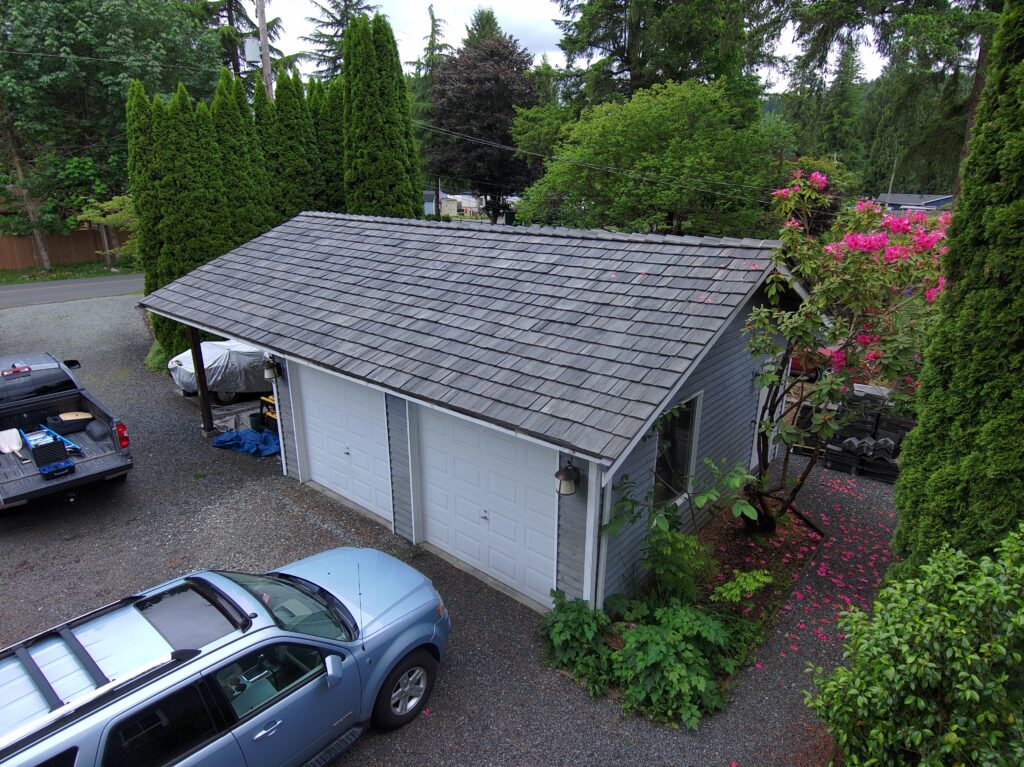
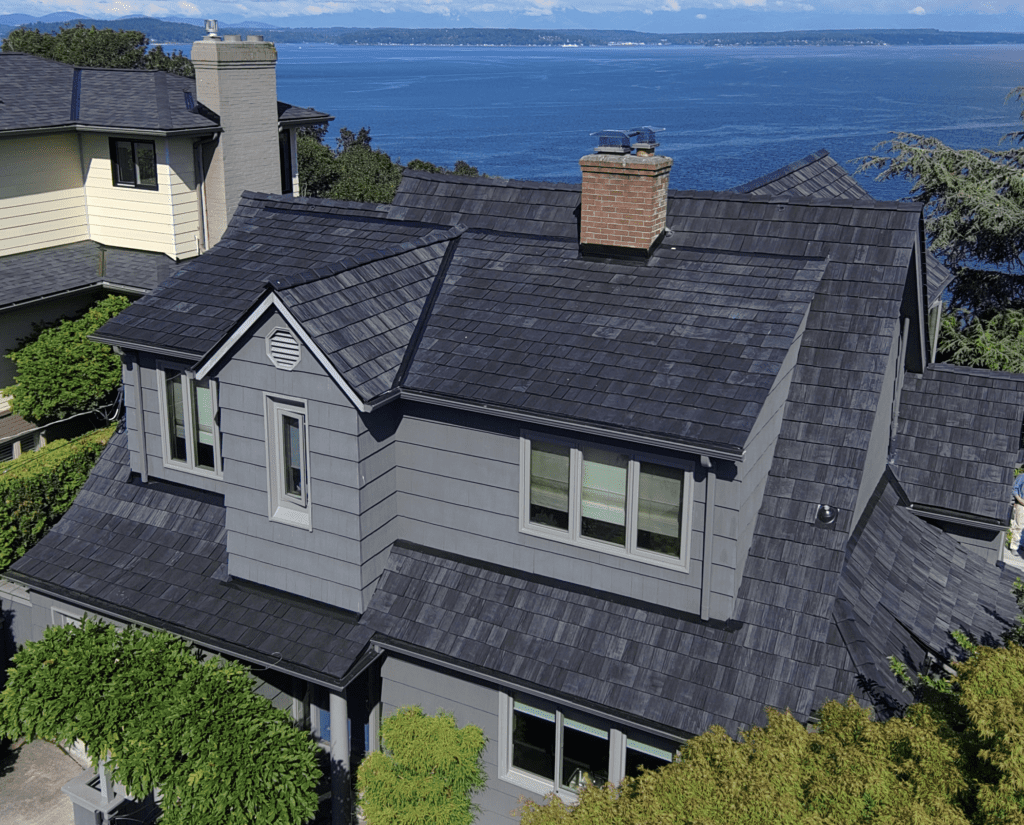
Metal Roofing: Recyclable and Long-Lasting
Metal roofing is one of the most popular choices in eco friendly roofing for good reason. Not only does it last two to three times longer than asphalt shingles, but it’s also made with up to 95% recycled content—and can be recycled again at the end of its life.
In hotter climates, metal roofs with reflective coatings reduce cooling needs, helping homeowners cut down on energy usage. If you’re planning to stay in your home long-term and want a sustainable roofing solution that stands up to wildfire and extreme weather, metal roofing is a smart investment that pays off for decades.
Brava Roof Tile: Sustainable Luxury with a Modern Edge
Brava roof tiles deliver the high-end look of slate, cedar shake, or Spanish tile—without the weight or environmental impact. Made from post-consumer recycled plastics, they’re lightweight, durable, and reduce both transport emissions and structural strain.
This material is engineered for longevity, with strong UV resistance, Class A fire ratings, and storm durability. For homeowners who want an elegant design that supports eco friendly home building, Brava is a smart alternative to resource-heavy traditional materials.
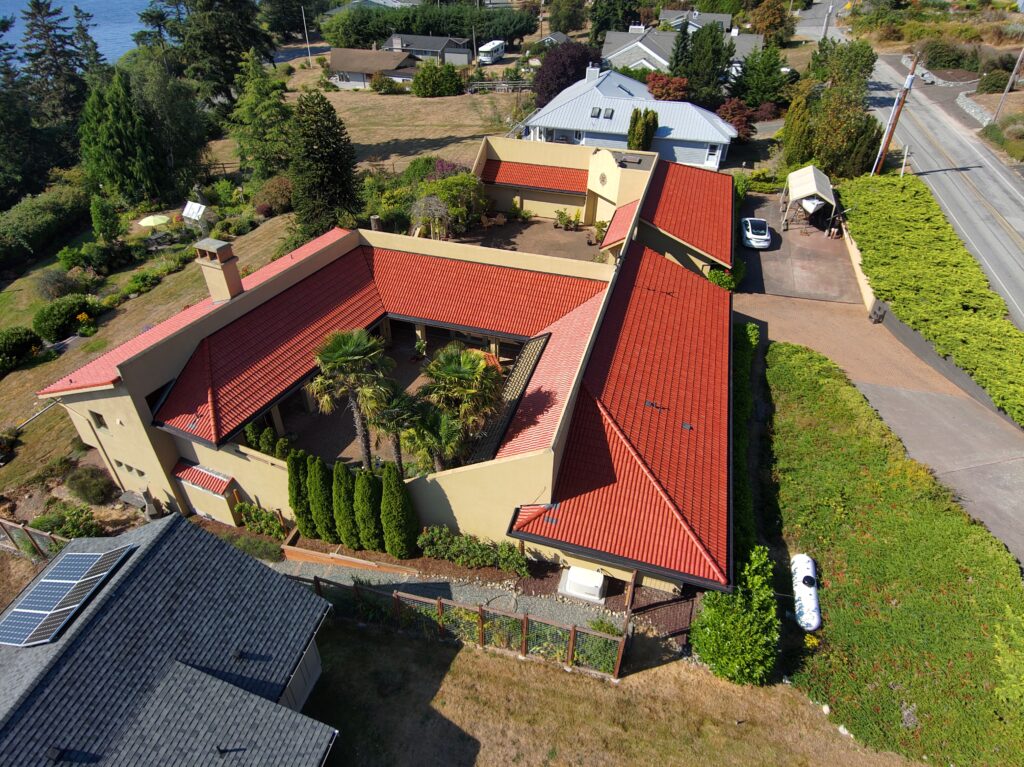
Green Roofing Systems: Living Roofs for Urban Efficiency
For those interested in the most advanced eco-friendly roofing options, green roofs—also called living roofs—offer a unique solution. These systems involve growing vegetation over a waterproof membrane, transforming your roof into a functioning ecosystem.
They help absorb stormwater, reduce urban heat, and even improve air quality. While they require specialized installation and structural support, green roofs are ideal for flat rooftops and high-performance homes aiming for net-zero or LEED certification.
How to Choose the Right Eco-Friendly Roof
When comparing eco-friendly roofing materials, consider:
- Your climate: Reflective materials are better for warm regions, while insulation is key in cold climates.
- Your budget: Solar and Brava tiles are costlier upfront but offer long-term returns.
- Your home’s structure: Some roofs (like tile or green systems) require reinforcements.
- Your long-term plans: Choose longevity if you plan to stay in your home.
Final Thoughts on Sustainable Roofing
Going green with your roof isn’t just good for the planet—it’s a smart, long-term investment in your home’s energy efficiency, durability, and value.
At Orca Roofing & Exteriors, we stay at the forefront of eco friendly roofing solutions in the Pacific Northwest. Whether you’re interested in solar shingles, Brava roof tile, or metal systems made from recycled materials, our team helps you choose a sustainable option that fits your home, your goals, and your budget.
Explore your eco-friendly roofing options with Orca—contact us today for expert guidance and a personalized estimate.
Eco Friendly roofing options faqs
What is the most eco-friendly roofing material?
Metal roofing is widely considered one of the most eco-friendly roofing materials due to its long lifespan, high recyclability, and reflective coatings that reduce heat absorption. Other sustainable options include Brava Roof Tile (made from post-consumer recycled plastics), solar shingles (which generate renewable energy), and green roofs that support vegetation and reduce stormwater runoff. The best option depends on your home’s structure, climate, and sustainability goals.
Are solar shingles worth it in the Pacific Northwest?
Yes. While the Pacific Northwest receives less direct sunlight than other regions, solar shingles are still an effective and eco-friendly roofing option. Today’s photovoltaic technology can generate energy even in cloudy conditions. Paired with federal and local incentives, solar shingles can lower your utility bills and your carbon footprint—especially for homes with decent roof orientation and minimal tree cover.
How do I know if a roofing material is sustainable?
A sustainable roofing material typically has several key qualities: it’s made from recycled or renewable materials, it’s recyclable at the end of its life, and it helps improve your home’s energy efficiency. You can also look for third-party certifications like ENERGY STAR or Cradle to Cradle. Materials with long lifespans—like metal, Brava tile, or slate—are often more sustainable simply because they don’t need to be replaced as often.
Is eco-friendly roofing more expensive?
Eco friendly roofing can have a higher upfront cost, especially for materials like metal, solar shingles, or composite tile. However, these materials usually last much longer than asphalt, reduce energy costs over time, and often qualify for rebates or tax incentives. When you factor in performance, lower maintenance, and environmental impact, sustainable roofs often offer better long-term value.